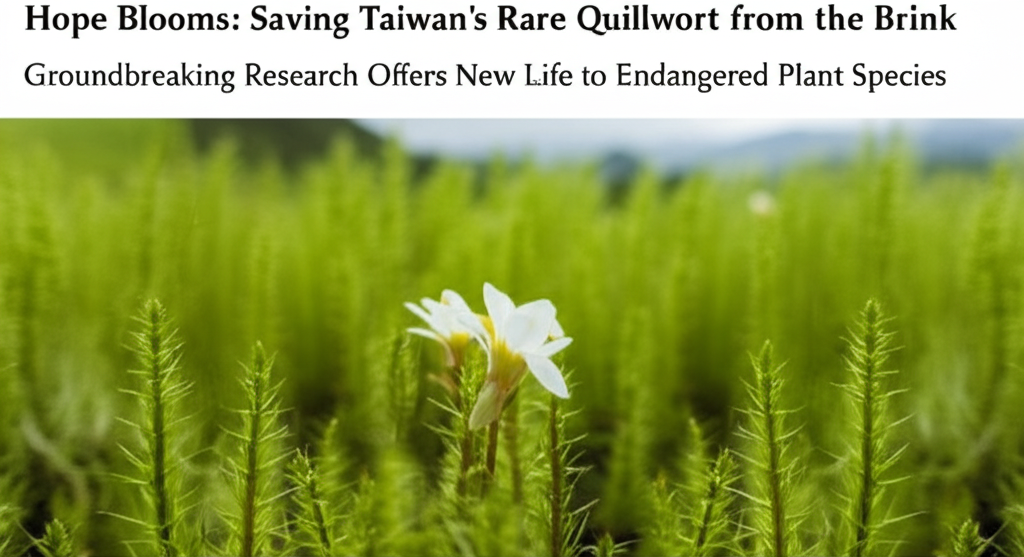Hope Blooms: Saving Taiwan's Rare Quillwort from the Brink
Groundbreaking Research Offers New Life to Endangered Plant Species

Taipei, April 14 – In a significant victory for conservation efforts, researchers have made a breakthrough in the propagation of the Taiwan quillwort (Isoetes taiwanensis), a critically endangered semi-aquatic herb endemic to the Menghuan Lake area of Yangmingshan in Taipei. This development eases the immediate threat of extinction for this unique species.
The Taiwan quillwort, first discovered in 1971, is confined to a habitat of less than 0.5 hectares surrounding Menghuan Lake, according to Huang Yao-mou (黃曜謀), a researcher at the Taiwan Forestry Research Institute.
Despite thriving in a humid subtropical climate, the species has faced severe threats, including drought and competition from other plants, nearly leading to its extinction in 2006, Huang explained.
To aid in its preservation, Huang conducted a 3-to-5-year study, observing that the plant releases spores that overwinter in the soil and germinate in the following spring.
According to Huang, cold winter temperatures play a crucial role in activating these spores, with some germinating the next year and others taking up to 30 years.
Huang's research involved experimenting with soil samples containing Taiwan quillwort spores, storing them in a refrigerator at 4 degrees Celsius and removing samples at regular intervals.
He discovered that while the plant's megaspores typically took an average of 12 weeks to germinate, exposure to sustained cold temperatures could accelerate this process to as little as two weeks.
Furthermore, Huang found that 63 percent of the spores germinated after 20 weeks of cold storage, compared to only 26.5 percent under normal conditions.
More specimens also reached later stages in their life cycle, opening up possibilities for educational and research uses, and bolstering conservation efforts, Huang stated.
Huang highlighted that Taiwan quillworts are the first plants in the genus Isoetes to have their genome sequenced. This is useful for studying the special type of photosynthesis, called CAM photosynthesis, used by them and some terrestrial plants.
Since Isoetes in neighboring countries like China, Japan, and South Korea are mostly hybrids with Taiwan quillworts, the genome data also allows scientists to better understand the evolution of Isoetes, Huang added.
Huang and his team's findings on the effects of cold treatment on Taiwan quillwort spore germination were published in the India Fern Journal last December.
Other Versions
Florece la esperanza: Salvar la rara quillwort de Taiwán del borde del abismo
L'espoir fleurit : Sauver l'espèce rare de Taïwan de l'effondrement
Harapan Mekar: Menyelamatkan Quillwort Langka Taiwan dari Jurang Kepunahan
La speranza fiorisce: Salvare la rara quillwort di Taiwan dall'orlo del baratro
希望が花開く:台湾の希少なクイルワートを瀬戸際から救う
희망이 피어납니다: 대만의 희귀한 퀼워트를 위기에서 구하다: 대만의 희귀한 퀼워트를 구하다
Namumulaklak ang Pag-asa: Pagliligtas sa Bihirang Quillwort ng Taiwan Mula sa Bingit
Надежда расцветает: Спасение редкого тайваньского растения от гибели
ความหวังเบ่งบาน: การช่วยชีวิตควินวอร์ตหายากของไต้หวันจากปากเหว
Hy vọng nở rộ: Cứu nguy cây bồng bồng hiếm của Đài Loan

